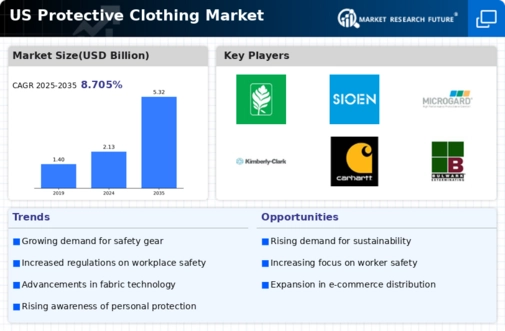The US Protective Clothing Market has seen significant advancements and shifts in competitive dynamics over recent years, driven by the increasing focus on safety regulations across various industries. These developments have led to heightened demand for protective clothing designed to mitigate risks associated with hazardous work environments, thereby influencing the landscape and strategies adopted by key players in the market. Innovative designs incorporating advanced materials, compliance with regulatory standards, and integrating sustainability in manufacturing processes have become pivotal for companies seeking to maintain a competitive edge.
The entry of new players and the ongoing enhancement of existing product lines have further intensified the competitive environment, pushing companies to invest in research and development to meet evolving customer needs.Lakeland Industries stands out in the US Protective Clothing Market due to its broad product portfolio, which includes a range of protective garments designed for various industries, including healthcare, construction, and manufacturing. The company has established a strong brand presence through its commitment to quality, durability, and compliance with relevant safety standards.
Lakeland Industries focuses heavily on leveraging advanced materials and innovative technologies in its offerings, ensuring that their products meet stringent industry requirements while providing maximum comfort and protection to users. Their manufacturing capabilities, distribution networks, and customer-centric approach enhance their market position, allowing them to respond effectively to shifts in market demand and emerging trends.Sioen Industries holds a notable position in the US Protective Clothing Market with a comprehensive portfolio that includes high-performance protective clothing and fabrics for various applications. The company’s strengths lie in its ability to blend innovation with functionality, offering products that emphasize safety and versatility.
Sioen Industries has made strategic moves in the market, including mergers and acquisitions that have bolstered its presence and extended its reach within the US market. Their emphasis on research and development has resulted in cutting-edge solutions catering to specific industry needs, such as chemical protection and flame-resistant clothing. With an extensive distribution network and a strong commitment to quality, Sioen Industries continues to solidify its reputation as a leader in protective clothing, ensuring that their products not only meet regulatory requirements but also fulfill the practical demands of end-users across various sectors.





















Leave a Comment